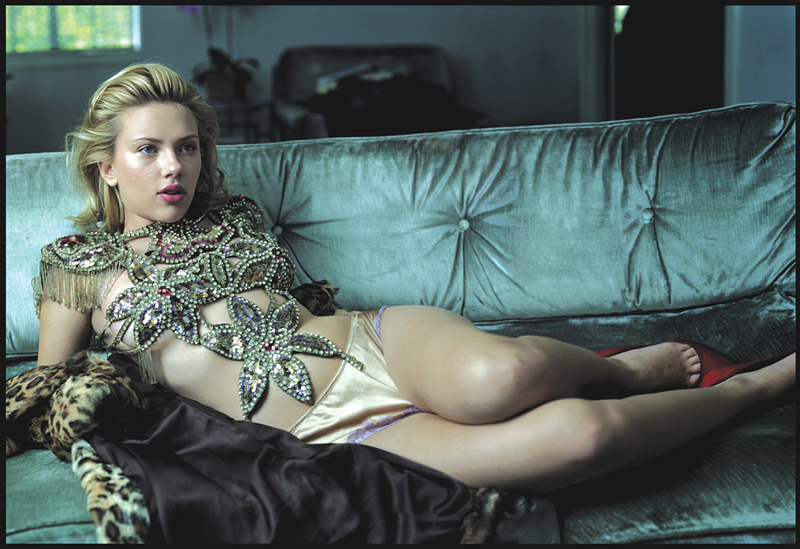If you drive to Columbus by Dec. 30, you can see a photography show — Annie Leibovitz — that serves as the culmination to the journey through celebrity/fashion photography begun by three FotoFocus-related museum shows here — Taft Museum of Art’s Star Power: Edward Steichen’s Glamour Photography; Contemporary Arts Center’s Image Machine: Andy Warhol and Photography; and Cincinnati Art Museum’s Herb Ritts: L.A. Style.
Best of all, you can see all four shows — the three in Cincinnati and Leibovitz at Wexner Center for the Arts on the Ohio State University campus — in rough proximity to each other, as all will be up through December (and a couple for longer).
This retrospective of Leibovitz’s work has more than 200 images, most chosen from the representative, authoritative Master Set she has put together from her 40-plus years of work.
Now 63, the Connecticut-born Leibovitz studied at San Francisco Art Institute and began working for Rolling Stone, then a Bay Area start-up, in 1970. Her most famous work, from Rolling Stone and Vanity Fair, is amply presented in this show, but so is much else.
Her photography is often stylized and glamorous, as befits the tradition of celebrity portraiture in which Steichen excelled. Only you can see how much farther she takes it, and how color “glamour” photography has come to need shock value to have power. Yet her work isn’t just splashy for the sake of getting wet. There is much intelligence and wit in her photographs.
She gets her Hollywood subjects to indulge in fantasies of themselves. There is “Scarlett Johansson, Los Angeles 2004,” the young star reclining provocatively on a couch in a room with low, soothing light, wearing a bejeweled, floral-patterned breastplate and panties, in a pose to make Cleopatra envious.
One wonders what Steichen would have thought of how Leibovitz chose to show that aging, but still bad-boy, icon of the New Hollywood of the 1970s, Jack Nicholson.
He is impossibly irascible in “1992, Mulholland Drive,” where — with dangling cigarette, in bathrobe and shades — he stands atop the green fabric of some building’s roof and applies a putter toward a cluster of golf balls. He’s complicit in the silliness, which makes him all the cooler.
Yet her work can also be soul-baringly direct, especially her black-and-white prints, which seem to carry forth in the tradition of Richard Avedon’s wrenching The Family 1976 project for Rolling Stone — Leibovitz’s Rolling Stone. We see giants of our time, sometimes looking weary from the aging process but way beyond the need for “glamour.”
“William Burroughs, 1995, Lawrence,” presents two side-by-side images of the Beat writer, both against black backgrounds. One is a profile with head virtually bald, eyes closed and face looking worn. In the other he faces the camera, almost leaning into it, eyes open with sagging skin below. (He died just two years later.)
Leibovitz, who had a close relationship with Susan Sontag, brings the same kind of no-nonsense truth to her black-and-white (and sometimes color) portraits of other artists and writers (as opposed to movie stars) — Louise Bourgeois, Hunter S. Thompson, Patti Smith, Agnes Martin and Sontag herself.
In what is probably her most famous image, “John & Yoko; Dec. 8, 1980, New York,” Leibovitz combines everything. In this color photo, a Rolling Stone cover, a naked Lennon, curled up in a semi-fetal position, clings to Ono, who is wearing a black sweater and jeans. They seem lost in the moment.
I am puzzled by the gravity (not gravitas) of it. It seems so staged and where is the ground? Yet how many other photos capture the truth of any couple’s love so well? As much as his songs, this photograph is how we now remember Lennon, who was assassinated later that day.
Annie Leibovitz the show has many surprises — there is some excellent photojournalism in war-torn Sarajevo and during Nixon’s resignation from the White House, when she captures several Marines rolling up the ceremonial carpet, holding onto caps against the breeze of the helicopter lifting the disgraced ex-president away. It comes across as if they’re holding their heads in shame.
Still, her greatest accomplishment is to be the greatest portrait photographer of her generation. It’s an important show to see.
For hours and other information, visit www.wexarts.org.
CONTACT STEVEN ROSEN : [email protected]


